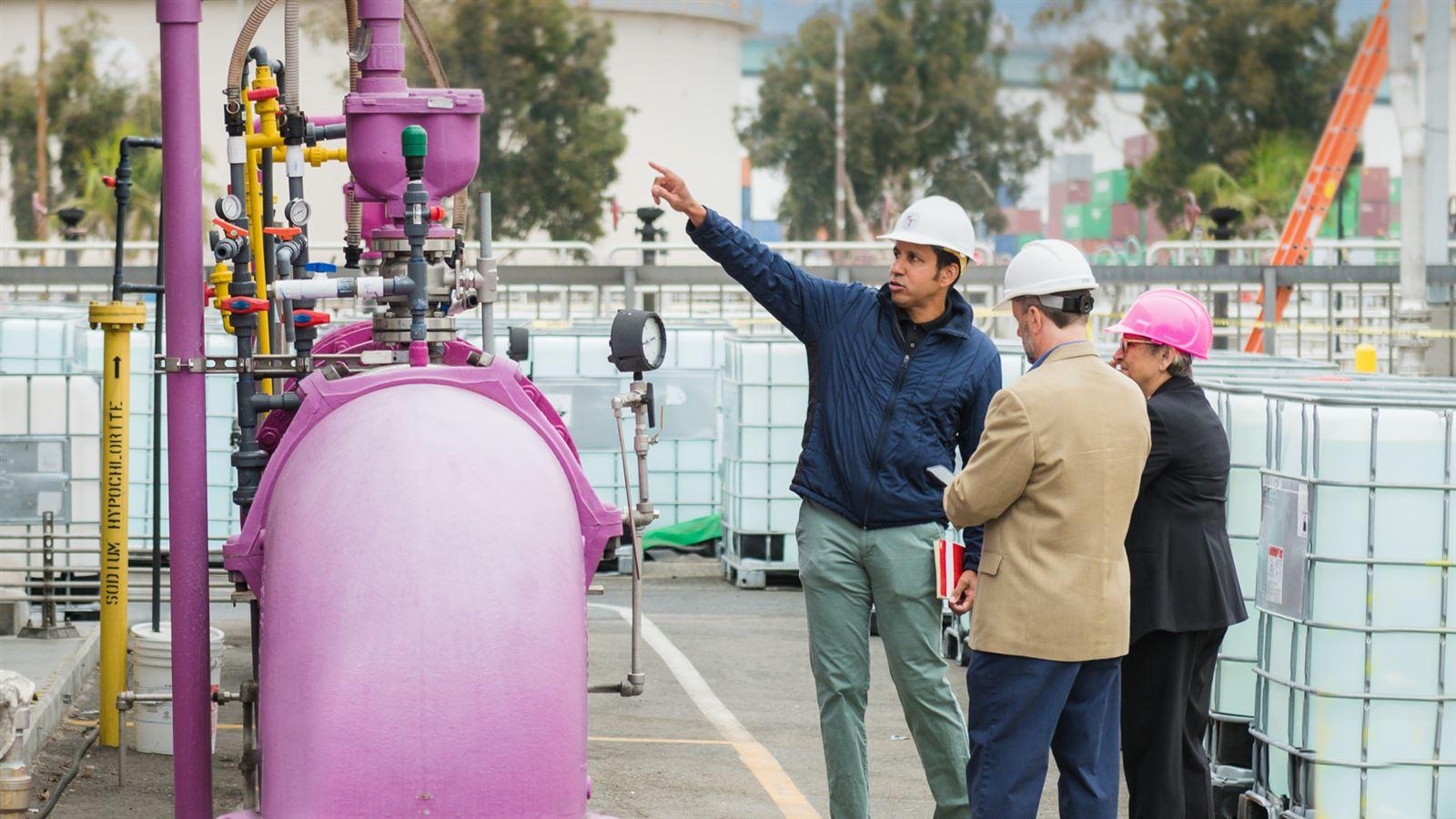Effective Uses for Reclaimed Effluent: Understanding if Water Reuse Makes Sense for Your Facility
There are many reasons to consider reuse at your facility from concerns about regional water scarcity or limited municipal supplies, to address regulatory issues, or as a way to meet corporate Environmental, Social, and Governance (ESG) goals. However, turning municipal wastewater or your process wastewater into a reusable input can present some engineering challenges.
Let’s consider some of the potential uses for reclaimed water in your facility:
 |
Cooling Towers: Evaporative cooling systems require significant volumes of make-up water to replace water lost through evaporation. Additionally, some water must be periodically discharged, referred to as “blow-down water,” so that dissolved solids concentrated during evaporation do not build up in the cooling water and damage equipment. When using reclaimed water for cooling towers, you must control biological regrowth (i.e., when nutrients are present and a disinfectant residual is not maintained) and scaling due to the presence of minerals (particularly calcium, magnesium, sulfate, alkalinity, phosphate, silica and fluoride). |
 |
Irrigation of Landscaping Features or Agriculture: This is often a “low-hanging fruit” in terms of water reuse. In the past the standard for reusing domestic wastewater for irrigation was referred to as “Title 22”, named for the California State standard that defined treatment standards. While it is no longer on the books, it is used as a standard for reuse water for irrigation and typically requires filtration and disinfection before discharge. |
 |
Prepared food manufacturing: Reuse water is utilized within food production facilities for various uses from initial washes to conveyance. CDM Smith has worked with several firms to reuse process water within these facilities including J.R. Simplot Company and Frito-Lay |
 |
High-tech water reuse: Reclaimed water is not only used in high-tech manufacturing, such as the semiconductor industry for microchip and circuit board manufacturing, but also increasingly in data center cooling. Water quality for circuit board manufacturing requires extensive pre-treatment and some facilities use ultrapure water which requires additional treatment processes. Data centers, known for their intensive water usage primarily for cooling purposes, have begun to adopt reclaimed water to reduce their environmental impact and conserve potable water resources |
 |
Plant washdown and utility water: Many plants have uses for “non-potable” water for washing down facilities or equipment, or for other uses that don’t require the water to be treated to drinking water standards. |
If you have these use cases and are ready to take the next step, ask yourself these questions:
How should we use the water?
Some of the cases above may seem applicable to your facility, or a combination of several uses.
What are the water flows at my facility?
Facilities should start with a water audit that considers daily and seasonal use variations, assesses current and future water use (both quality and quantity), and determines potential combined uses of recoverable water. Reuse for cooling and irrigation, for example, will vary considerably depending on the season and weather conditions.
What are future water demands?
Reuse considerations should include a water study to predict future demands, understand conservation opportunities and determine water reuse opportunities on a site-wide basis. This will help predict total treatment needs and capacities for design purposes and help determine your return on investment.
What is the public perception and acceptance of the type of reuse?
The reuse of treated water will rely on acceptance of the end-user of the quality and reliability of the treatment technology, plant operations and continuity of “guaranteed quality,” including removal of unknown constituents that may be harmful. This is a critically important consideration and needs a business-based approach as well as employee and stakeholder education and programmatic methods to confirm acceptance—before implementation or construction of reuse technologies.
What is in the wastewater?
Sampling and analytical testing are needed to determine minimum, maximum and average loadings on the treatment system. These may include nontraditional analytical parameters such as PFAS compounds, salinity, hardness, alkalinity, silica, cations and anions, especially if membrane treatment systems are considered. These process streams can vary considerably in biochemical oxygen demand; chemical oxygen demand; fats, oils, and grease; total suspended solids; pH; temperature; and salt concentrations.
What waste disposal options are available?
Water reuse must be compared to traditional discharge options. In reuse scenarios that use reverse osmosis and other membrane-based processes, the concentrated reject brine stream must be carefully managed and disposed. If this stream cannot be discharged into the publicly owned treatment works or surface water, then onsite evaporation or further concentration of the reject may be necessary, significantly increasing costs and the space required.
What are the potential costs and savings?
Reuse scenarios should be considered from a life-cycle cost perspective. Costs may include those for capital and operating and maintenance (with labor, electric/energy, chemicals and residuals disposal being the primary ongoing operational costs). Water reuse treatment costs depend on the water quality required. As the quality increases, the costs increase, and the level of technical sophistication required of facility operators increases likewise.








